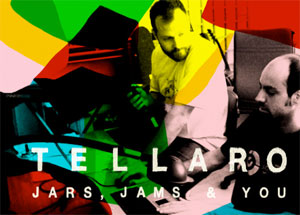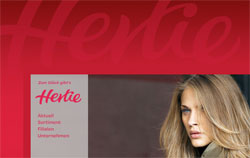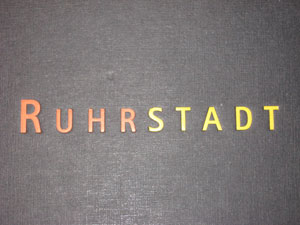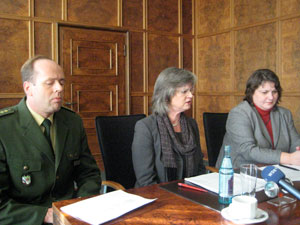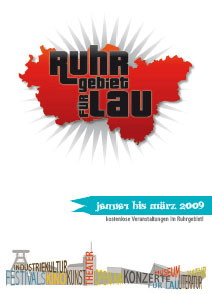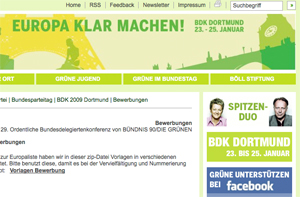
In ein paar Kommentaren habe ich ja klar gemacht, dass ich das Blogger-Sponsoring der Grünen entspannter sehe als David. Ganz besonders gilt das für den bevorstehenden Europa-Parteitag in Dortmund.
Ein günstiges Hotel, eine Zugkarte und ein paar Teller Erbsensuppe mit Tofu-Beilage – mehr bekommt auch die zweite Blogger-Gruppe nicht, die vom Partei der Grünen am kommenden Wochenende berichten wird. Im Ernst: Dafür kann man niemanden kaufen – davon ab war ich mir bei den Bloggern aus der ersten Rutsche die ich kannte, Jens und Lukas, auch ziemlich sicher, dass man sie nicht hätte kaufen können, wenn man die Tofu-Beilage gegen ein ordentliches Stück Mettwurst getauscht hätte.
Der Wert der Entschädigung ist lächerlich im Vergleich zu dem, was die Blogger den Grünen zur Verfügung stellen: Lebenszeit. Drei Tage auf einem Grünen-Parteitag? Einem Europa-Programmparteitag? Wollten die Grünen dieses Opfer entschädigen, sie müssten jedem der Blogger gleich noch mal eine All-Inclusive-Ticket für eine Fahrt nach Hawaii drauflegen, denn eines ist klar: Die Fünf erwartet ein Wochenende in der Hölle.
Ich habe etliche Parteitage erlebt, denn in meinem früheren Leben war ich Mitglied der Grünen (Bis 1996) und als solcher ein paar mal auch Delegierter. Ich hatte bei vielen der Parteitagen, die ich besuchte, Glück: Ich erlebte wie Roland Appel nicht auf die Reserveliste für den Bundestag kam, weil ein damaliger Kumpel von mir ihn in der Realo-Postille Kommune als Fahrer eines VW-Corrado geoutet hatte.Damas war das tödlich. Oder 1994, als in Langenfeld (Spott: Und sehen wir uns nicht in dieser Welt, dann sehn wir uns in Langenfeld) ein ganzer Parteitag Kerstin Müller zu Füßen lag. Die Frauen wählten sie auf die Bundestagsliste, weil sie eine Frau war, die Linken weil sie eine Linke war und die Realos weil sie wirklich verdammt gut aussah in ihrem Minirock, dessen Wirkung sie nur leicht mit Birkenstockschuhen zu kaschieren versuchte.
Als Realo war ich erschüttert zu erleben, wie unsere Kandidaten 1994 in Recklinghausen massakriert wurden und habe im Hinterzimmer des Kolpinghauses erlebt, wie Reiner Priggen und Michael Vesper zitternd vor Wut trotzdem versuchten, unsere Gemüter zu beruhige. Später habe ich mich an dem Leiden der Linke amüsiert, als sie einen ganzen Krötensee schlucken mussten, als sie 1995 dem Koalitionsvertrag zwischen den Grünen und der SPD in NRW zustimmten und habe mich immer amüsiert, wenn sich irgendwelche Pappnasen ganz spontan um irgendwelche Mandate beworben haben. Damals wurde das alles vorher zwischen den Flügelexponenten ausgehandelt.
Als Journalist habe ich dann auch noch zwei oder drei erlebt – unter anderem den Parteitag in Bielefeld, als Fischer die Partei außenpolitisch auf Kurs brachte – und fand diese Entwicklung, obwohl schon nicht mehr in der Partei, richtig.
Klingt das alles irgendwie interessant? Ist es aber nur in Ausnahmefällen. In der Regel sind Parteitage ungeheuer zäh und langweilig. Sie werden abseits dieser seltenen Höhepunkte erst interessant, wenn man sich auskennt und etwas tiefer drinsteckt. Das ist mir nur am Rande gelungen. Aber ich bekam etwas mit von den wirklich wichtigen Gesprächen in den Hinterzimmern, auch wenn ich nur bei zweien dabei war. Ich sah, wer mit wem wann auf den Gängen sprach und konnte nach vielen Jahren bei den Grünen ahnen, worum es bei den Gesprächen ging – und lag mit meinen Ahnungen trotzdem noch oft daneben.
Um das Spannende eines Parteitages mitzubekommen, muss man nicht einen erleben sondern viele – und sich in der Partei sehr gut auskennen. Man muss auf den Gängen seine Ansprechpartner kennen und sie sich nicht von den Grünen-Presseleuten vermitteln lassen. Wer nur, ob als Delegierter, Journalist oder als Blogger, am offiziellen Programm teilnimmt und sich durch die Tonnen von Anträgen, Änderungsanträgen etc. durcharbeitet, bekommt gerade auf unspektakulären Parteitagen nicht mit was wirklich läuft – und wird sich fürchterlich langweilen.
Das gilt vor allem für einen Europa-Parteitag: Um die Plätze auf der Reserveliste bewerben sich vor allem diejenigen, die es hinter sich haben (Bütikhofer, Beer, spannend könnte Schulz werden), Europa-Politik interessiert niemanden. Entsprechend wird das Programm eine Addition von Wünschen sein und keine reale Bedeutung haben, und dann soll dieses Programm noch in einem Parlament umgesetzt werden, das kaum etwas zu sagen hat – zumindest deutlich weniger als der Bundestag. Das Interessanteste werden die Diskussionen um den Gaza-Antrag werden: Eine gute Gelegenheit sich mit unvorsichtigen Formulierungen zu blamieren oder sich als Komplettidiot zu outen. Von drei Tagen Parteitag werden vielleicht ein oder zwei Stunden spannend sein und wenn man nicht die Kontakte in die Partei hinein, um die innere Struktur der Veranstaltung zu erfassen, kann man sich das alles auch zu Hause auf Phoenix anschauen.
Also: Die fünf Blogger die Dortmund besuchen werden für ihre Mühen, ja für ihr Leiden, das nach wenigen Stunden einsetzen wird, nicht einmal halbwegs adäquat entschädigt. Von einer Bestechung zu reden ist quatsch. Wenn sie schlau sind verbringen sie den ersten Abend noch auf der Parteitagsparty gehen (Die waren früher wirklich nett) und geniessen dann Dortmund. Im Kreuzviertel gibt es ein paar schöne Kneipen und am Samstag solltet sie in der Innenstadt shoppen gehen. Noch ein Tipp für Fußballfans: Der Weg nach Gelsenkirchen ist nicht weit. Meldet Euch doch für eine Besichtigungstour durch die SchalkeArena an. Das lohnt sich.
